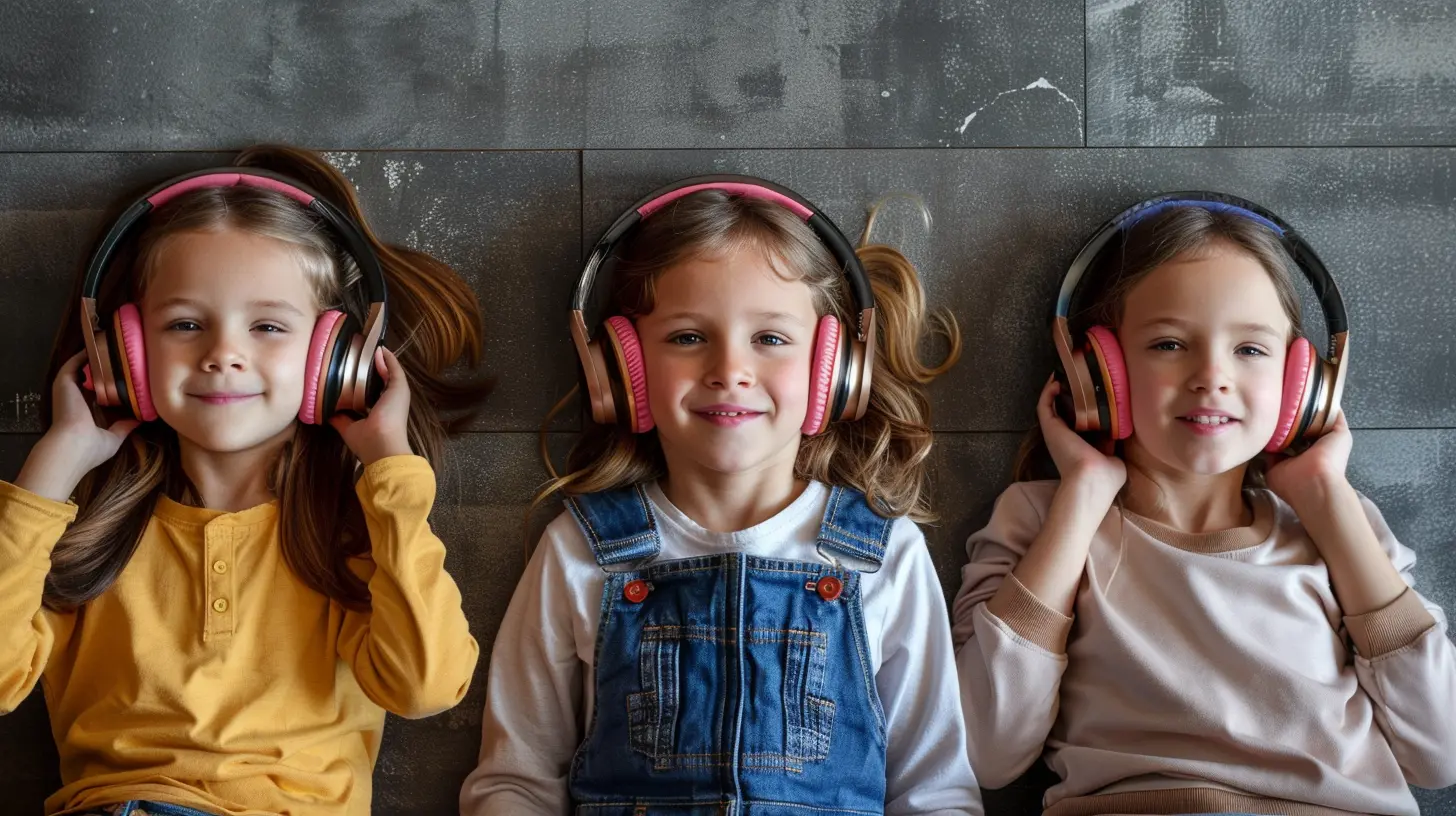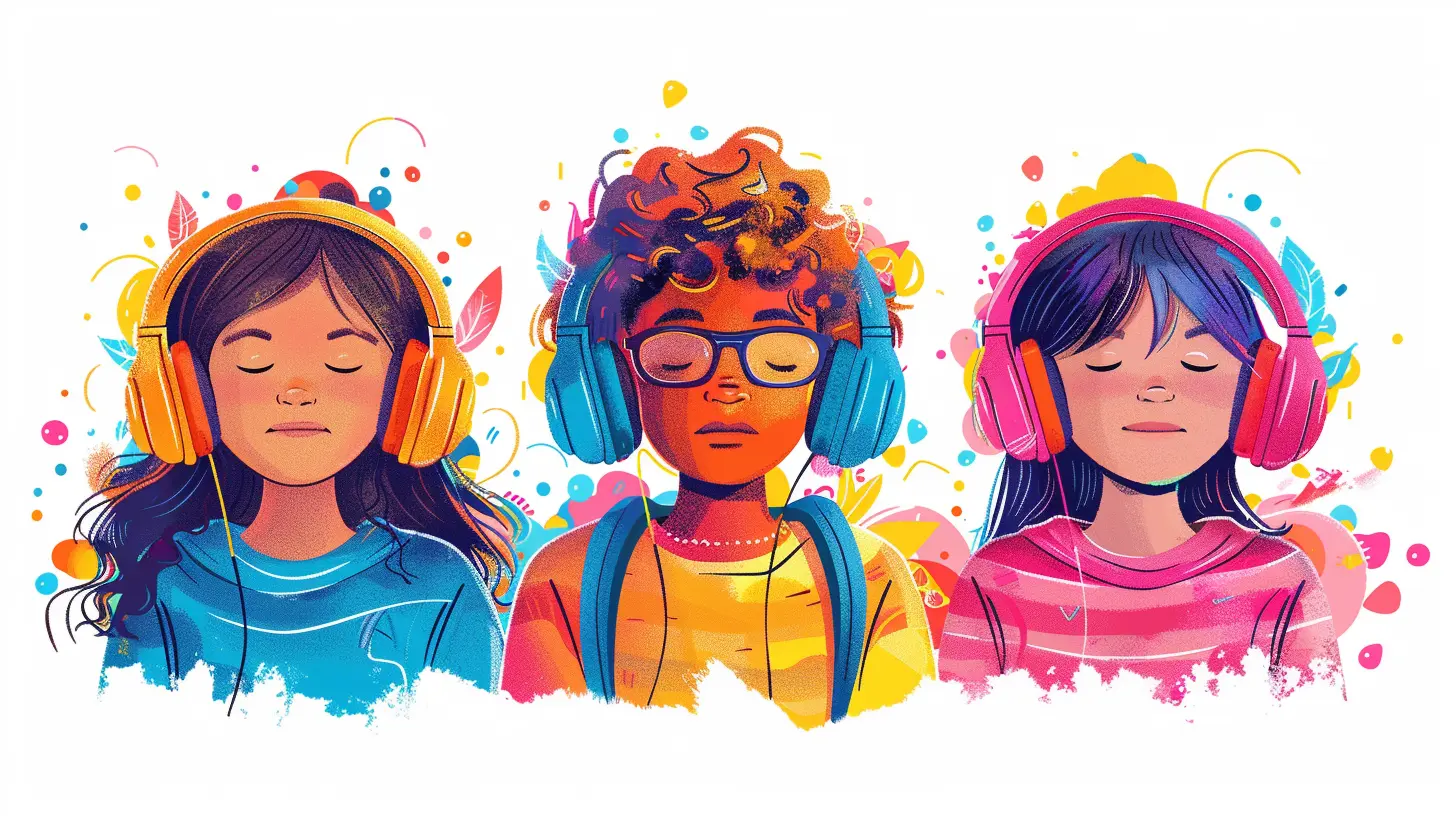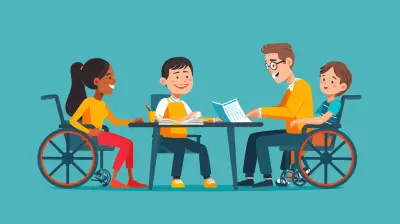Helping Auditory Learners Succeed in Noisy Environments
21 July 2025
Let’s face it—our world is a noisy place. Blaring horns on the street, humming air conditioners in classrooms, non-stop chatter in open office spaces—it's everywhere. And while most of us can tune out the sound and push through, auditory learners face a unique challenge when it comes to learning or staying focused in these environments.
So, how can we make life easier for auditory learners in noisy surroundings? That’s exactly what we’re diving into today.
Who Are Auditory Learners, Anyway?
Before we tackle noisy environments, let’s talk about who we’re helping here.Auditory learners are people who absorb and retain information better when they hear it. Think lectures, podcasts, discussions, or explaining things out loud. These learners do well when they're listening, not just reading or watching.
Can you remember a time when someone explained a concept to you, and it just clicked? That’s the power of auditory learning.
But, here’s the catch: noisy environments can be kryptonite for auditory learners. When there’s too much background sound? It’s like trying to hear your favorite song through a wall of static.
The Struggle: Why Noisy Environments Are a Problem
Imagine trying to focus on a podcast while sitting in a crowded café. Tough, right?For auditory learners, background noise competes with the sounds they actually need to hear. In classrooms or workplaces, this could mean missing important instructions, zoning out during lectures, or struggling to concentrate during group work.
And the noise doesn’t even have to be loud—it just has to be unwanted.
Let’s break it down:
- Competing sounds = distracted mind
- Overstimulation = mental fatigue
- Missed info = lower performance
The result? Frustration, anxiety, and a serious hit to confidence.
Why Supporting Auditory Learners Matters
We all learn differently. While visual learners might thrive with diagrams and notes, auditory learners shine in discussion-based or spoken-word settings.When we support auditory learners—especially in challenging spaces—we’re not just being inclusive. We’re creating better learning environments for everyone.
After all, who doesn’t enjoy clearer communication?
10 Practical Tips to Help Auditory Learners Thrive in Noisy Environments
Alright, let’s get to the good stuff. If you’re an educator, parent, student, or anyone who wants to support auditory learners, here are some tried-and-true methods that can make a huge difference.1. Use Noise-Canceling Headphones
This one’s a game-changer.Noise-canceling headphones are like a magic bubble around your ears. They block out the chaos and help auditory learners focus deeply on what they’re listening to—whether it’s a recorded lecture, an audiobook, or just some calming instrumental music.
🎧 Bonus Tip: Using white noise or nature sounds can also help mask distractions.
2. Create Quiet Zones for Focused Learning
If you're in a school, office, or even working from home, designating a “quiet zone” can be life-saving.This might mean:
- A sectioned-off room or corner
- A designated quiet time during the day
- A quiet study area in a library
The idea? Give auditory learners a space where they can soak in information without battling noise every step of the way.
3. Record Lessons or Meetings
Let’s admit it—we all forget stuff. But auditory learners benefit big-time from being able to replay what they heard.Encourage recording of:
- Lectures
- Group discussions
- Team meetings
With recordings, auditory learners can revisit the material when it's quiet and when they’re better able to focus.
📱 Tip: Even a smartphone voice memo app works wonders.
4. Use Audio-Based Learning Tools
There’s a goldmine of audio content out there—use it!- Podcasts related to the subject
- Audiobooks on curriculum topics
- Voice notes to review key points
Auditory learners can reinforce lessons during a walk, commute, or while doing chores. Talk about multitasking like a pro!
5. Incorporate Verbal Processing Activities
Here’s a fun fact: auditory learners often learn by speaking.Encourage:
- Reading out loud
- Repeating key concepts
- Teaching others verbally
These aren't just quirky habits—they're powerful strategies that help encode information deeply into memory.
6. Provide Written and Spoken Instructions
This is super important in classrooms and workplaces alike.Instead of handing out a task list only in writing, try reading it aloud too. This dual-delivery approach reinforces understanding and supports multiple learning styles at once.
📝 Pro Tip: Encourage students to repeat instructions back to you. It helps solidify their understanding.
7. Use Technology to Their Advantage
We're living in a digital age, so let’s use it to support auditory learning.Tools like:
- Speech-to-text apps (great for note-taking)
- Text-to-speech software (helpful for reading assignments)
- Voice recording tools (to review later)
These apps help learners bridge the gap between distraction and comprehension.
8. Engage with Group Discussions (In Controlled Settings)
Group discussions can be gold for auditory learners—when managed well.Try:
- Setting ground rules to minimize over-talking
- Using a "talking stick" approach to give everyone a turn
- Keeping groups small to reduce cross-talk chaos
Controlled discussions allow for deep listening and meaningful engagement.
9. Practice Mindfulness and Focus Exercises
It sounds a little “zen,” but stick with me.Auditory learners can benefit from mindfulness techniques that help tune out the noise and tune into the moment.
Simple techniques like:
- Deep breathing
- Listening exercises (like focusing on one sound at a time)
- Guided meditations
These help train the brain to focus, even when the environment isn’t ideal.
10. Advocate for Their Needs
Sometimes, the best tool is self-advocacy.Teach auditory learners to speak up when the noise becomes overwhelming. Whether it’s requesting accommodations or simply asking for a quieter seat, advocating for better conditions helps boost confidence and academic performance.
🗣️ Remember: it’s not complaining—it’s setting the stage for success.
How Teachers and Parents Can Make a Difference
If you’re in a position to support an auditory learner, your role is huge.Here’s how you can help:
For Teachers:
- Offer audio recordings of lectures- Encourage classroom rules about noise levels
- Give oral presentations in addition to written ones
- Create projects around storytelling or podcasting
For Parents:
- Set up a quiet homework zone- Encourage audio-based learning (apps, audiobooks)
- Discuss what they learned verbally—ask them to teach you
It’s all about reinforcing their strengths while minimizing barriers.
What About Remote Learning?
Ah, the new normal.Online classes might seem like a blessing—no background noise, right? But let’s not forget that households can be noisy too. Pets, siblings, street traffic…
Here are some quick remote-learning tips:
- Use headphones for clearer audio
- Record sessions for playback
- Mute microphones when not speaking to reduce distractions
- Find the quietest corner in the house (even the closet, if needed!)
Long-Term Benefits of Supporting Auditory Learners
When auditory learners are supported in noisy environments, they’re not just surviving—they’re thriving.✅ Better academic performance
✅ Increased self-confidence
✅ Deeper engagement in learning
✅ Stronger listening and communication skills
And honestly? These are skills that benefit everyone, no matter their learning style.
Conclusion: Tune into Their Needs
At the end of the day, helping auditory learners succeed isn’t about eliminating every sound—it’s about amplifying the right ones.We live in a noisy world, yes—but with the right tools, strategies, and support, auditory learners can rise above the noise and shine.
So let’s help them do just that.
Listen carefully. Support loudly.
all images in this post were generated using AI tools
Category:
Learning StylesAuthor:

Monica O`Neal
Discussion
rate this article
2 comments
Madison Monroe
Auditory learners thrive with structured support; minimizing noise and using sound cues enhances understanding.
November 21, 2025 at 3:46 AM

Monica O`Neal
Thank you for your insights! Structured support and sound cues are indeed essential for helping auditory learners excel in challenging environments.
Isaiah Sharpe
This article offers fantastic insights for supporting auditory learners amidst noise! With practical tips and relatable strategies, it’s a great resource for parents and educators alike. Let’s empower our auditory learners to thrive, even in challenging environments! Excited to implement these ideas!
August 3, 2025 at 4:25 AM

Monica O`Neal
Thank you for your positive feedback! I'm glad you found the insights helpful—excited for you to implement them!


